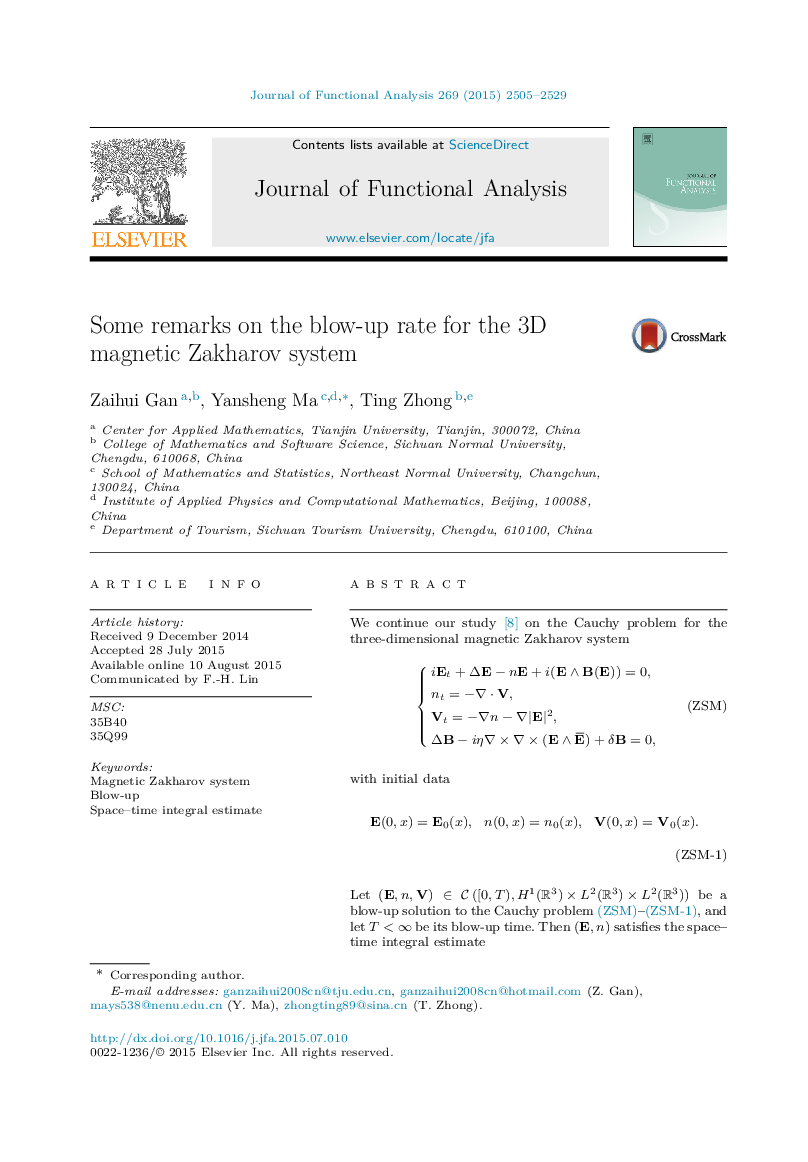| Article ID | Journal | Published Year | Pages | File Type |
|---|---|---|---|---|
| 4589998 | Journal of Functional Analysis | 2015 | 25 Pages |
We continue our study [8] on the Cauchy problem for the three-dimensional magnetic Zakharov systemequation(ZSM){iEt+ΔE−nE+i(E∧B(E))=0,nt=−∇⋅V,Vt=−∇n−∇|E|2,ΔB−iη∇×∇×(E∧E‾)+δB=0, with initial dataequation(ZSM-1)E(0,x)=E0(x), n(0,x)=n0(x), V(0,x)=V0(x).E(0,x)=E0(x), n(0,x)=n0(x), V(0,x)=V0(x). Let (E,n,V)∈C([0,T),H1(R3)×L2(R3)×L2(R3))(E,n,V)∈C([0,T),H1(R3)×L2(R3)×L2(R3)) be a blow-up solution to the Cauchy problem (ZSM)–(ZSM-1), and let T<∞T<∞ be its blow-up time. Then (E,n)(E,n) satisfies the space–time integral estimateequation(E-1)∫0T[(∫R3|n(t,x)|qdx)1q+(∫R3|E(t,x)|2qdx)1q]γdt=+∞, where γ>1ε, ε∈(0,14] and q=32(1−ε)∈(32,2]. The estimate (E-1) implies that, for a<1a<1,supt∈[0,T)[(T−t)aε(|n(t)|Lq(R3)+|E(t)|L2q(R3)2)]=+∞. In particular, if (E,n,V)(E,n,V) is a radially symmetric solution to (ZSM)–(ZSM-1), thensupt∈[0,T)[(T−t)aε(|n(t)|Lq(D)+|E(t)|L2q(D)2)]=+∞, where a∈(0,13) and D={x∈R3:|x|<1}D={x∈R3:|x|<1}.
